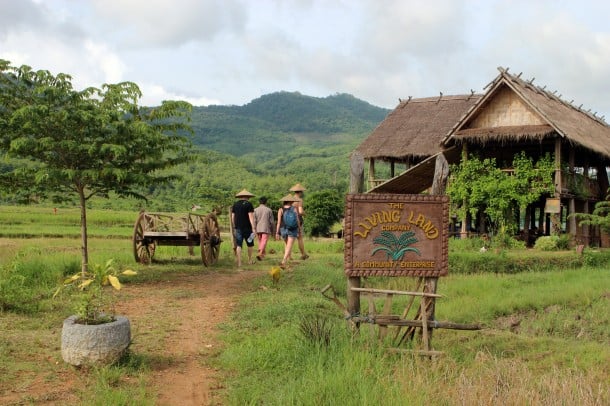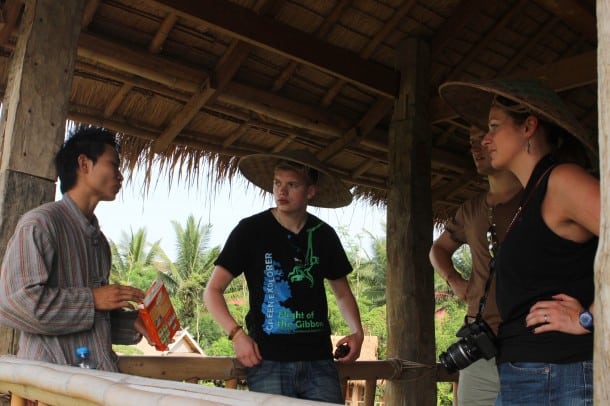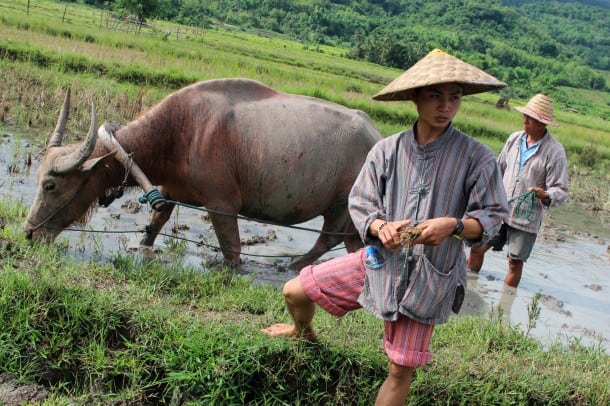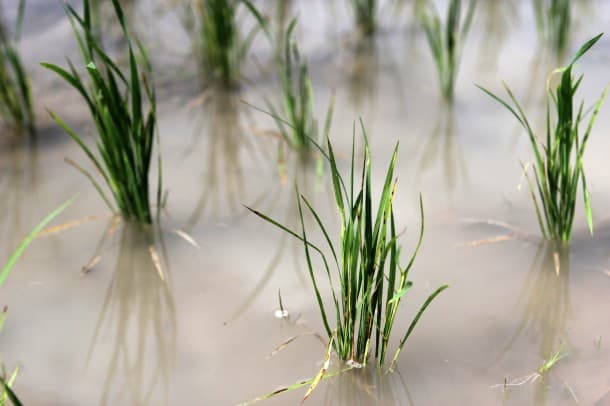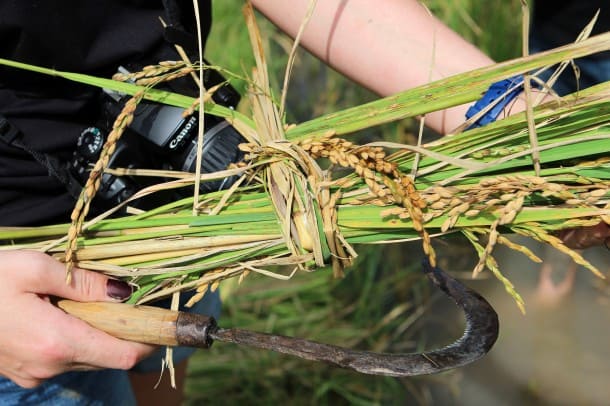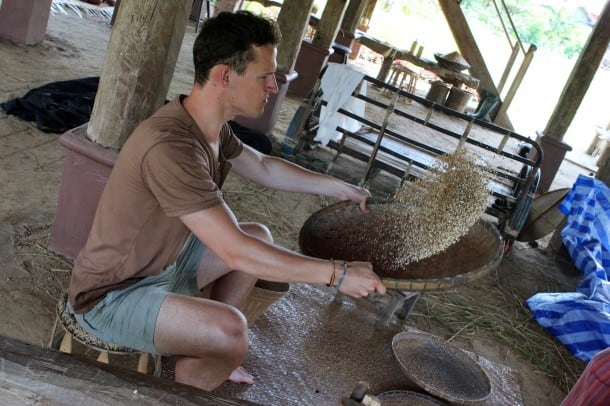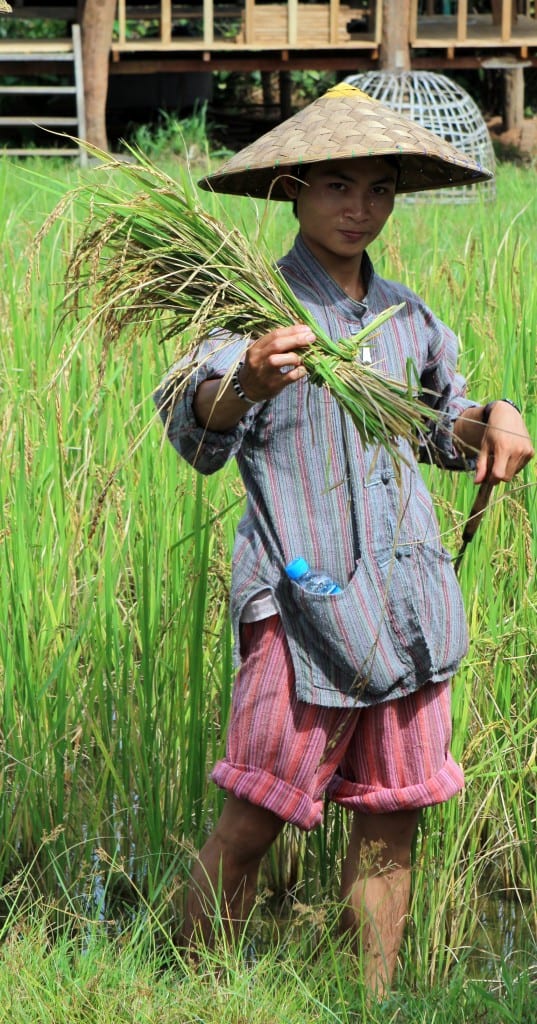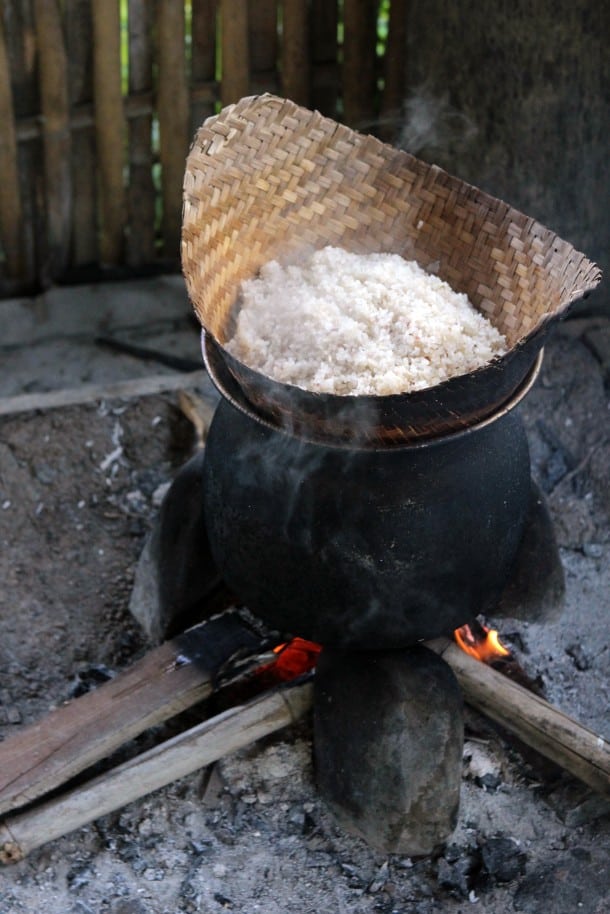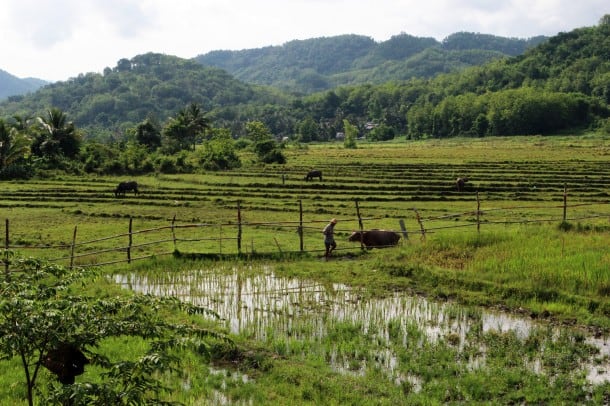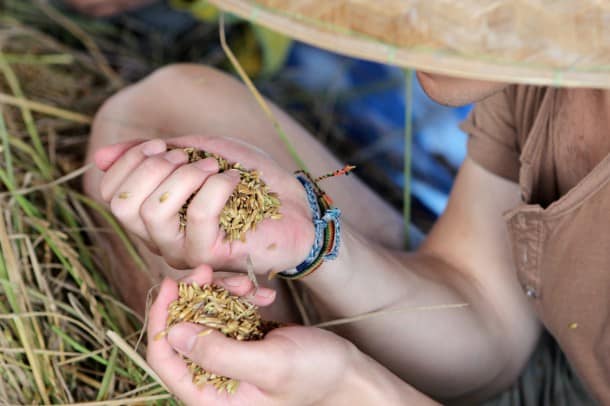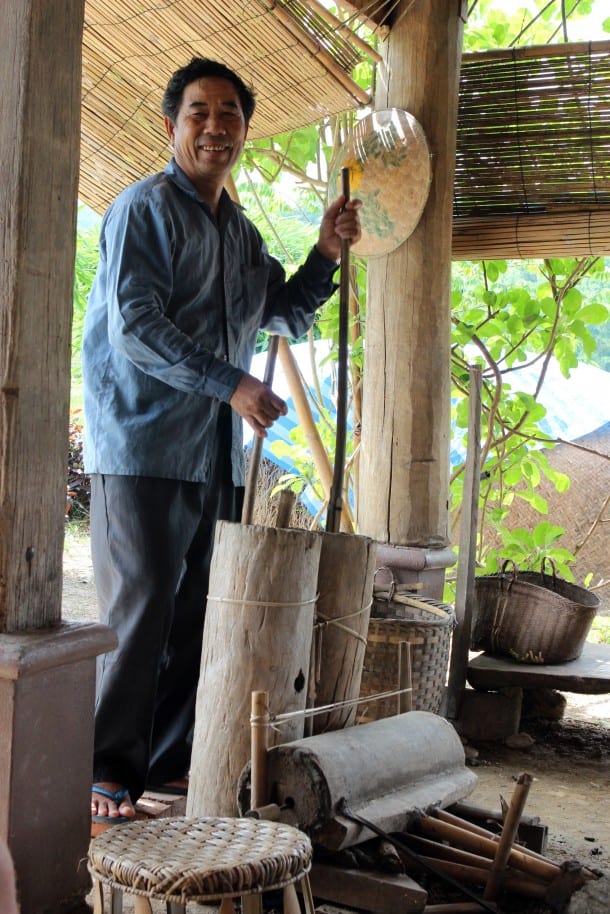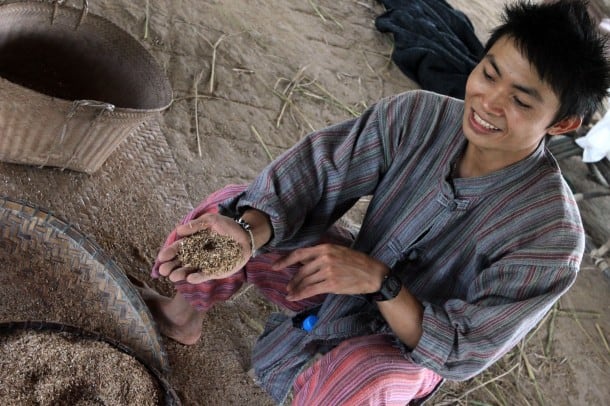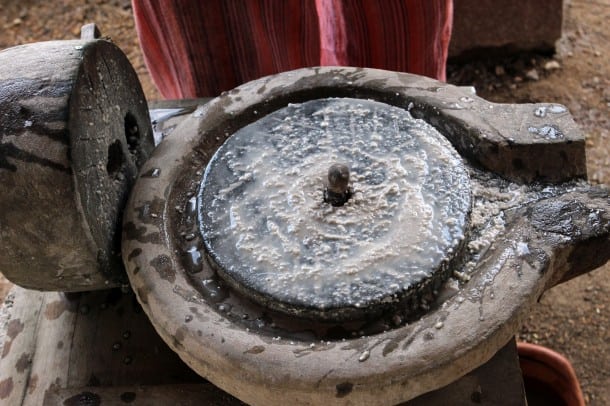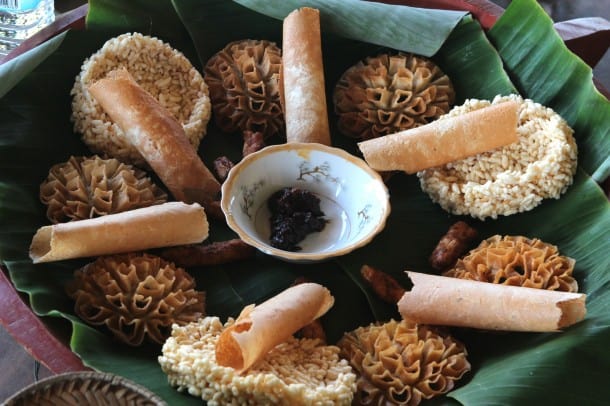My bare feet squelched uncomfortably in the mud beneath me, and the milky grey water rose up to lap at my knees. With one hand on the plough, and another holding the reins, I tried to convince myself that I really was in control of the beast before me.
Maybe being a rice farmer isn’t my life calling
My efforts aside, Susan the water buffalo seemed to already know the way by heart and started leading us in a long circle around the field. Trusting in her expertise, I was thankfully left to focus my attention on not falling face-first into the mud.
Ploughing the field
It was early on a Sunday, and I was knee-deep in the Living Land Farm in Luang Prabang, Laos. At the farm, hapless visitors like me can try their hand at all aspects of rice farming, from selecting the seeds, planting the sprouts, harvesting the rice, threshing the grains and – of course – eating it all later.
Oh, and let’s not forget ploughing the field.
It takes 14 steps to make rice
In all, as our guide Sai explained to us, there are 14 steps to make rice, and Living Land showed us each one in action. Rice is such an integral part of life in Asia, and our half-day tour of the property gave us the opportunity to learn about and fully appreciate the work that goes into every grain. It was a fascinating look at one of the most important elements of culture in Laos and Southeast Asia.
Community initiative dedicated to education
However, Living Land isn’t just an education centre on the methods of rice farming – it’s also a community initiative dedicated to educating locals on organic farming methods.
Originally started in response to the environmentally destructive farming methods in Laos – such as slash and burn agriculture and wide-spread use of pesticides and chemical fertilizers – Living Land is a project run by local Lao managers for the benefit of the surrounding community.
They provide free agricultural training, host farming students at the property, and distribute the rice they grow to the villages around Luang Prabang. They also support pilot schemes for the farmers curious about farming with Living Land’s organic methods. In addition to their rice terraces, Living Land also has an expansive organic garden, the produce from which they sell to hotels and restaurants in the area.
Living Land’s ‘Rice Experience
The half-day tours on rice production, known as Living Land’s ‘Rice Experience,’ first came about as a happy accident. Originally, word got around about the farm’s community initiatives and organic practices, and tourists began asking if they could see the farm for themselves. Noticing their interest, Living Land decided to expand their educational opportunities to the international community, as well as local.
Participating in each step of the rice harvest
Immediately, it was clear how passionate the people working at Living Land are about their project. Sai explained every step of the rice making process with both humour and enthusiasm, making sure that every one of us had a chance to participate in each step of the rice harvest and learn fully from the experience. The manager, Mr Laut Lee, was all smiles even when doing the physically exhaustive work of threshing rice, and was eager to explain where all of their traditional tools had come from.
Tasty end: lunchtime
Our tour ended just around lunchtime, and we were more than ready to sit down to a communal dish of the farm’s specialities – sticky rice with fiery chilli dip, round puffed crackers, cookies spiced with anise and coconut, and earthy, smooth rice wine.
Seeing them after having learned the amount of work that went into each grain of rice gave us perspective on where our meal had come from. Everyone ate thoughtfully, and hungrily. And especially after all that hard work driving Susan the buffalo, it was well deserved!
Want to experience rice farming for yourself?
Stray Asia includes the Rice Experience on the South-East Asia and Laos tours!


